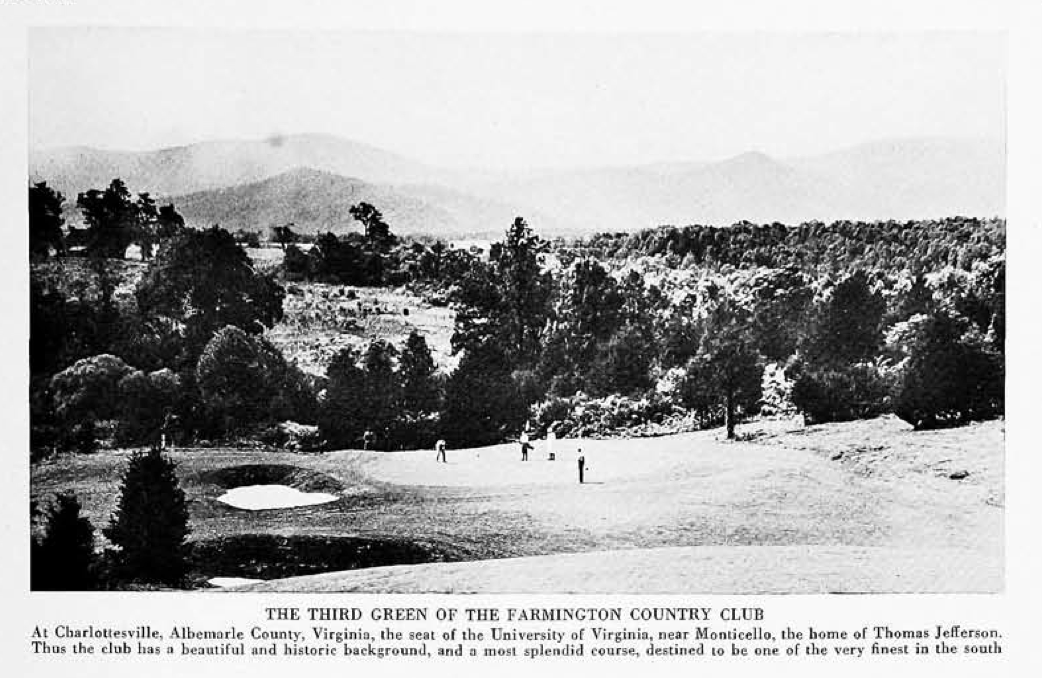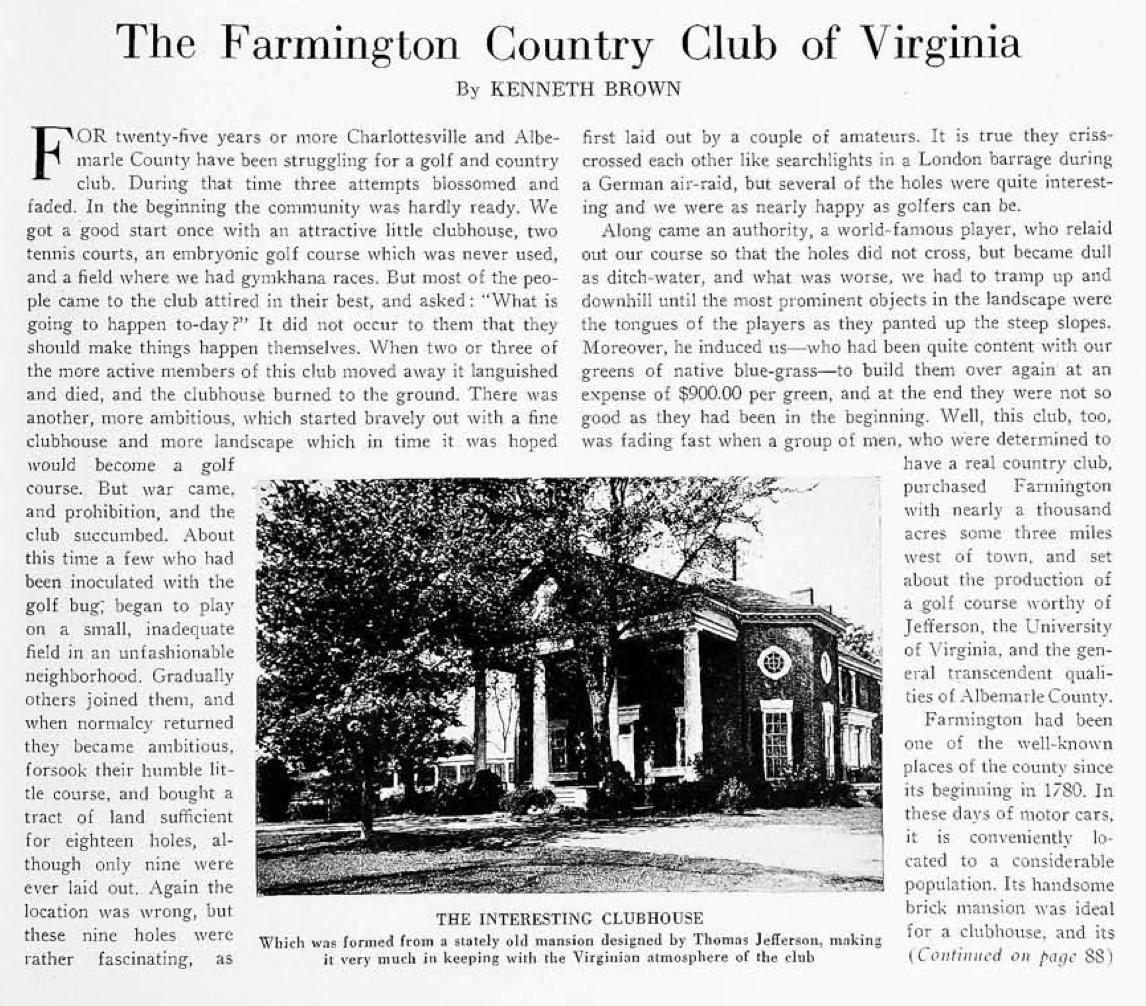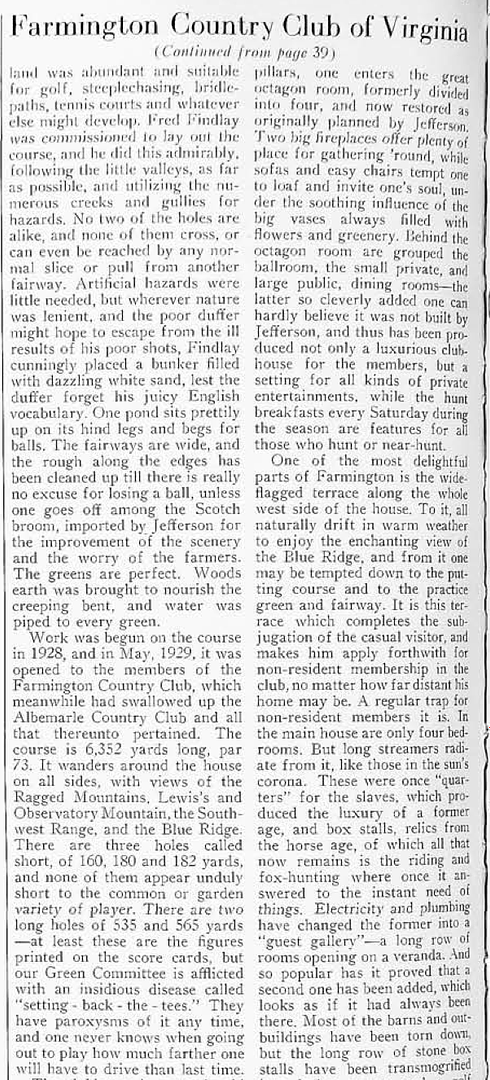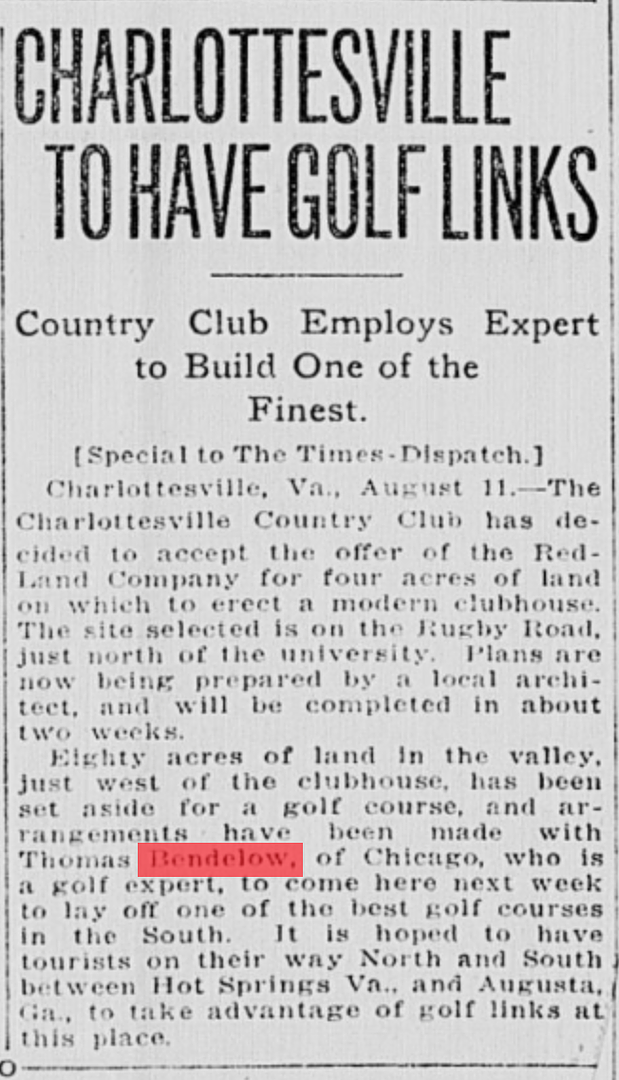This thread is intended to be an exploration of the questions that remain unanswered about the roots of American golf. If you have no interest in the arcana of GCA, feel free to tune this out.
I'll be posting a series of old articles covering courses for which I have little information. Many of these were probably never built, many of them have probably just slipped through the cracks of time.
Please chime in if you have any questions of your own, as the collective resources hereabout may just have the answers.
To kick things off, the article from the Dec. 1931 edition of Golf Illustrated discusses the attempts to get golf off the ground in Albemarle County, Virginia, leading up to the formation of Farmington CC in 1928 (which as the article notes was laid out by Fred Findlay). The text of the article describes three attempts to form golf clubs, as follows:
1. An embryonic course that languished when key members moved away;
2. A club whose development was interrupted by World War I; and
3. A club that evolved out of small "field" course which moved to new ground after the War, had a course laid out by amateurs and then hired a "world famous player" to improve the initial attempt.
These are the courses for which I can find a record for the time period in question near Charlottesville:
A. University of Virginia GC - Reported in the 1901 Harpers as a 9 hole course with a date of organization of 1897. Later Annual Guides note this with a date of organization of either 1895, 1898 or 1899.
B. Charlottesville GC - described as a 9 hole course in the early guides, with the 1900 Harpers noting a new course laid out last year.
C. Charlottesville CC - Aug. 1913 newspaper article (see below) reports note Bendelow laying out a new course for this club. No course by this name is noted in the Annual Guides. A Dec. 1914 American Golfer article notes Bendelow laying out a course in Charlottesville, North Carolina. The timing between the two articles could mean that the second article was discussing a separate course from the 1913 reporting.
D. Albemarle GC - First appears in the 1917 Annual Guide as a 9 holed with a date of organization of 1914. The article below notes the club was subsumed by the new Farmington CC.
E. Farmington CC - as described below.
F. McIntire Park GC - Another Fred Findlay course reportedly laid out in 1930.
Do B, C and D above match up with the course outlined in the article? Was Bendelow's work only on Charlottesville CC, or only on Albemarle? Were they one and the same?




Aug. 12, 1913 The Times Dispatch -
